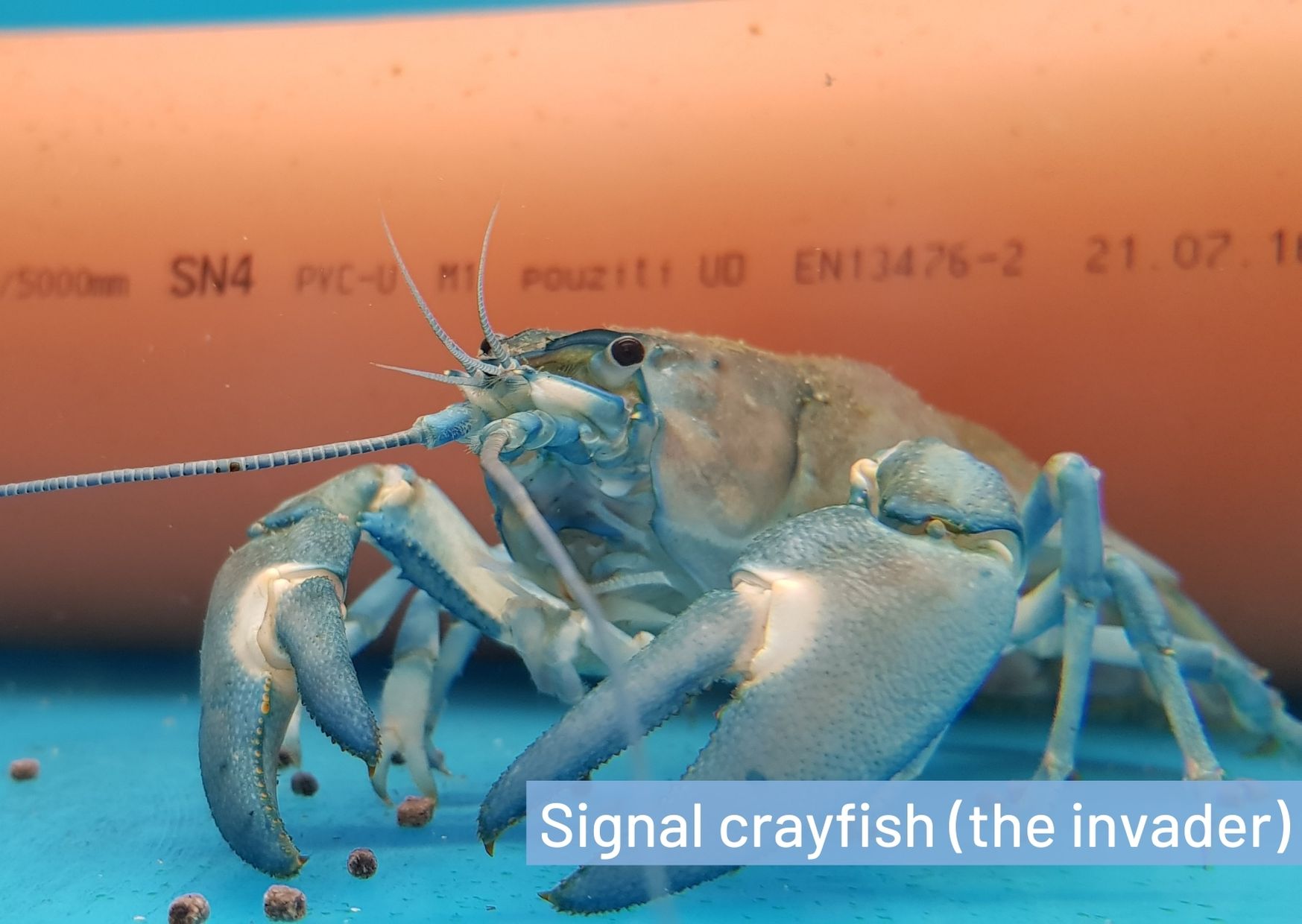 Invasive species is commonly bad news for a natural habitat or environment, and the native species living there in the first place. An invasive species is non-native, also called alien or introduced species, which after its introduction to a new place successfully establish and spread with some sort of negative impact on other species, habitats or environments. Sometimes, invasive species enters in company with microorganisms. This can become double-trouble, and is in fact among the most important “recipes” for plagues and pandemics. When a species does not “naturally belong”, geographic barriers has been crossed often between continents, and with human assistance. Trade with live organisms is among the main drivers to the invasive species problems. Let me take you through two examples where this activity has created invasive species that jeopardise the very existence of groups of freshwater crayfish and amphibians.
Invasive species is commonly bad news for a natural habitat or environment, and the native species living there in the first place. An invasive species is non-native, also called alien or introduced species, which after its introduction to a new place successfully establish and spread with some sort of negative impact on other species, habitats or environments. Sometimes, invasive species enters in company with microorganisms. This can become double-trouble, and is in fact among the most important “recipes” for plagues and pandemics. When a species does not “naturally belong”, geographic barriers has been crossed often between continents, and with human assistance. Trade with live organisms is among the main drivers to the invasive species problems. Let me take you through two examples where this activity has created invasive species that jeopardise the very existence of groups of freshwater crayfish and amphibians.
The North American signal crayfish is a magnificent but disreputable crayfish introduced to Sweden in the 1960s for “boosting” crayfish fishery. It was “almost” identical to their beloved and delicious noble crayfish, but even larger and seemingly more resistant to disease. They did not foresee the double-trouble. Signal crayfish became a very successful invader, not only outcompeting the noble crayfish, but also carrying a deadly weapon: Its parasite Aphanomyces astaci is harmless to American crayfish, but lethal other continents’ crayfish. In Europe’s freshwater habitats, the parasite met no resistance when infecting the naïve, nearly identical crayfish hosts. The resulting crayfish plague is a brutal disease wiping out whole populations in weeks, with the potential to eradicate all native freshwater crayfish outside the US continent. Signal crayfish has expanded to 39 European countries and its deadly parasite, ranked among the world’s 100 worst invasive species, causes drastic declines of Europe’s crayfish populations.
 Another invasive species on the “100 worst invasive species” list is Batrahcochytrium dedrobaditis (Bd). This fungus has caused drastic declines and eradications of amphibians worldwide, and it is among the most devastating emerging wildlife pathogens ever known. It was for long a mystery where the amphibian killer came from, but research traced Bd back to native amphibians in East Asia. Similar to signal crayfish, these original amphibian hosts tolerate the pathogen. The emergence of Bd in the early 20th century corresponds with the global expansion of commercial amphibian trade. Escapes from zoos or releases from aquaria are the “minor” accidents initiating the global disaster. Bd has caused dramatic amphibian declines in the tropics of Australia and Americas, while amphibians in very warm or very cold areas face less problems.
Another invasive species on the “100 worst invasive species” list is Batrahcochytrium dedrobaditis (Bd). This fungus has caused drastic declines and eradications of amphibians worldwide, and it is among the most devastating emerging wildlife pathogens ever known. It was for long a mystery where the amphibian killer came from, but research traced Bd back to native amphibians in East Asia. Similar to signal crayfish, these original amphibian hosts tolerate the pathogen. The emergence of Bd in the early 20th century corresponds with the global expansion of commercial amphibian trade. Escapes from zoos or releases from aquaria are the “minor” accidents initiating the global disaster. Bd has caused dramatic amphibian declines in the tropics of Australia and Americas, while amphibians in very warm or very cold areas face less problems.
Invasive species might not be equally bad everywhere. Many factors including climate and temperature affect its impact. Nevertheless, it is impossible to predict the impact of an invasive species in advance. We should therefore avoid any activity that could lead to the introduction, release or movement of none-native species to natural habitats where it does not belong. You never know what happens, but history is flooded with examples of how irrevocably bad it can go.



